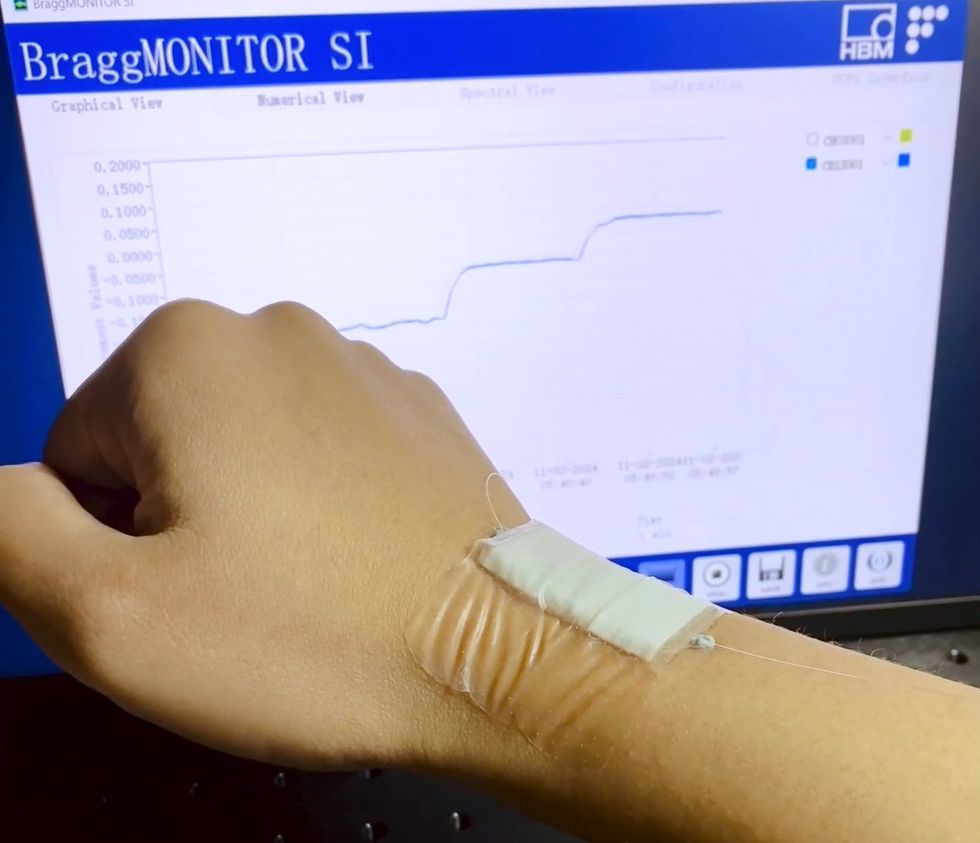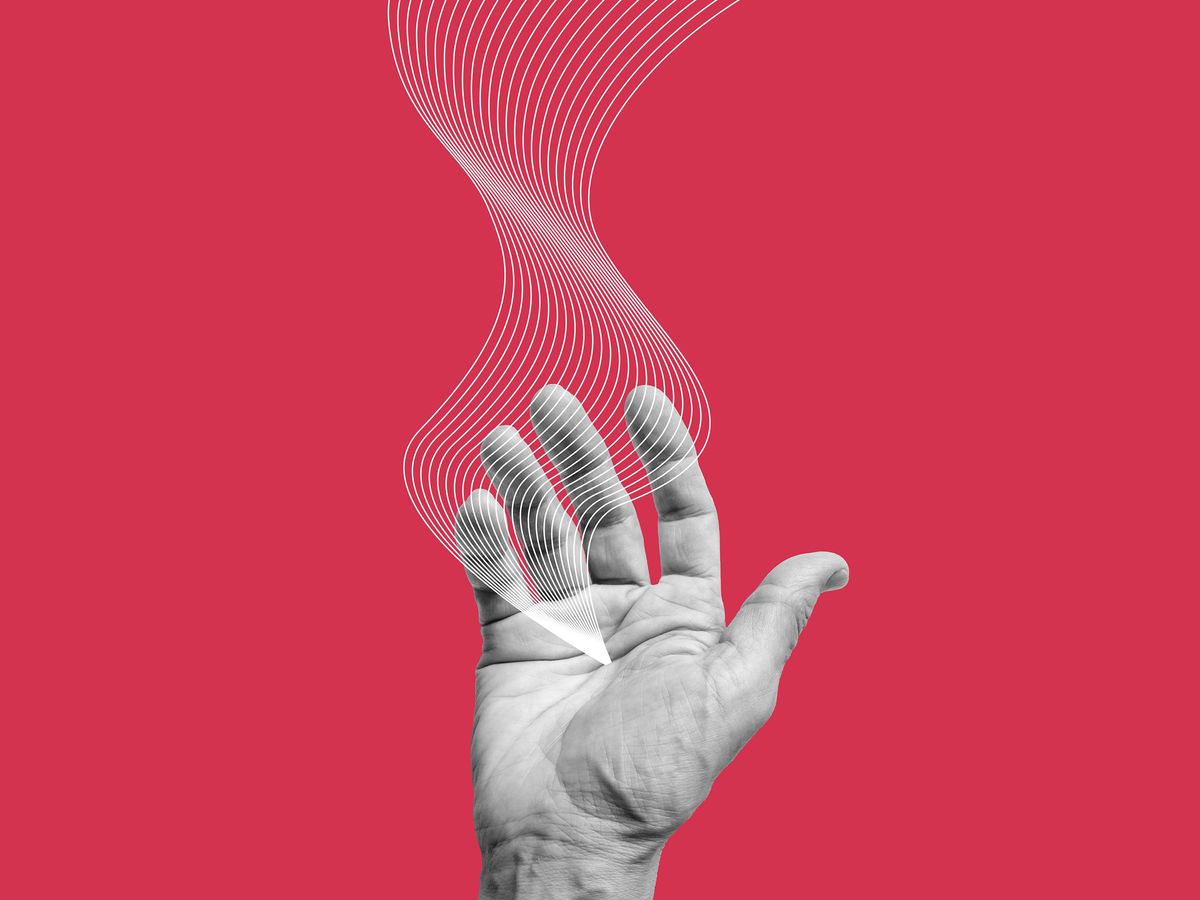Scientists in China have developed a thin, flexible sticker that can turn subtle hand, finger, and mouth motions into words or commands. The new wearable sensor, developed by researchers at the Guilin University of Electronic Technology and Beijing Normal University, could support assistive technologies for people who struggle with basic movements, such as those with disabilities or patients recovering from conditions such as strokes.
“We wanted to create something that could make a difference in their lives by enhancing their ability to interact with their surroundings more naturally and effectively,” says Chuanxin Teng, a professor at the Photonics Research Center at the Guilin University of Electronic Technology.
Conventional motion sensors for assistive technologies are often cumbersome, lack accuracy, or are not versatile enough to cater to individual needs. “Our goal was to develop a wearable solution that was both precise in detecting gestures and comfortable for everyday use, offering a more personalized and adaptive approach to rehabilitation and assistance,” Teng says.
“These optical sensors can detect even the slightest bend of a finger or twist of a wrist.” —Zhuo Wang, Beijing Normal University
The researchers developed sensors using 2- by 4-centimeter patches of soft, flexible silicone rubber, a material that can be worn for a long time without irritating the skin. “Unlike some earlier sensors that might have been bulky or uncomfortable, our sensors are designed with wearability in mind,” says Kun Xiao, a lecturer at Beijing Normal University.

The scientists embedded fiber optics that contained etches called fiber Bragg gratings into the silicone rubber patches, which were between 1 and 3 millimeters thick. These gratings reflect specific wavelengths of light while transmitting others.
The new sensors could detect slight changes in the wavelengths of light that flow through the devices when the optical fibers are stretched or bent. “These optical sensors can detect even the slightest bend of a finger or twist of a wrist,” says Zhuo Wang, a postdoctoral researcher at Beijing Normal University. “These sensors allow for more accurate and sensitive recognition of even subtle gestures and movements.”
In one experiment with sensors attached to index fingers, a volunteer was able to send messages using Morse code, with a bent finger representing a dash and a straight finger a dot. In another experiment where a sensor was taped onto a volunteer’s cheek, the volunteer was able to silently articulate “a” and “u” sounds.
“By translating subtle movements into digital commands or communication signals, our technology could make everyday technologies more accessible,” Xiao says. “Imagine being able to communicate through gestures alone, making technology more inclusive for those with mobility or speech limitations.”
For individuals recovering from strokes or dealing with disabilities, Xiao says the sensors provide a new way to monitor rehabilitation progress. The sensors can provide detailed feedback on even subtle movements to help track improvements over time, which could potentially speed up the recovery process. Xiao adds that the sensors can also be calibrated to make them tailored to individual users’ needs.
Beyond detecting gestures and facial expressions, Xiao notes these sensors could also monitor vital signs, such as respiratory or heart rates. Xiao says that athletes, for example, could use these sensors to monitor and improve their technique in real time. Gaming systems could also provide more immersive and interactive experiences by using the sensors to incorporate natural gestures and movements into gameplay.
“Our technology could make everyday technologies more accessible.” —Kun Xiao, Beijing Normal University
The researchers now plan to make the sensor smaller and more integrated into circuitry. They also want to make the sensor more capable of withstanding moisture, heat, stretching, and daily wear and tear, all of which would make it more feasible to embed the sensor in everyday wearable items such as wristbands, gloves, or patches, Wang says. In addition, they would like to enhance the sensors’ ability to wirelessly communicate with smartphones, computers, and other medical devices to help users, caregivers, and medical professionals monitor their data in real time, he adds.
All in all, “we envision a future where wearable sensors like ours become commonplace, seamlessly integrated into clothing, accessories, or even directly onto the skin,” Xiao says. “This could lead to a world where interaction with digital devices and environments is more natural and fluid, fundamentally changing how we live, work, and play.”
The scientists detailed their findings 27 February in the journal Biomedical Optics Express.
Charles Q. Choi is a science reporter who contributes regularly to IEEE Spectrum. He has written for Scientific American, The New York Times, Wired, and Science, among others.


